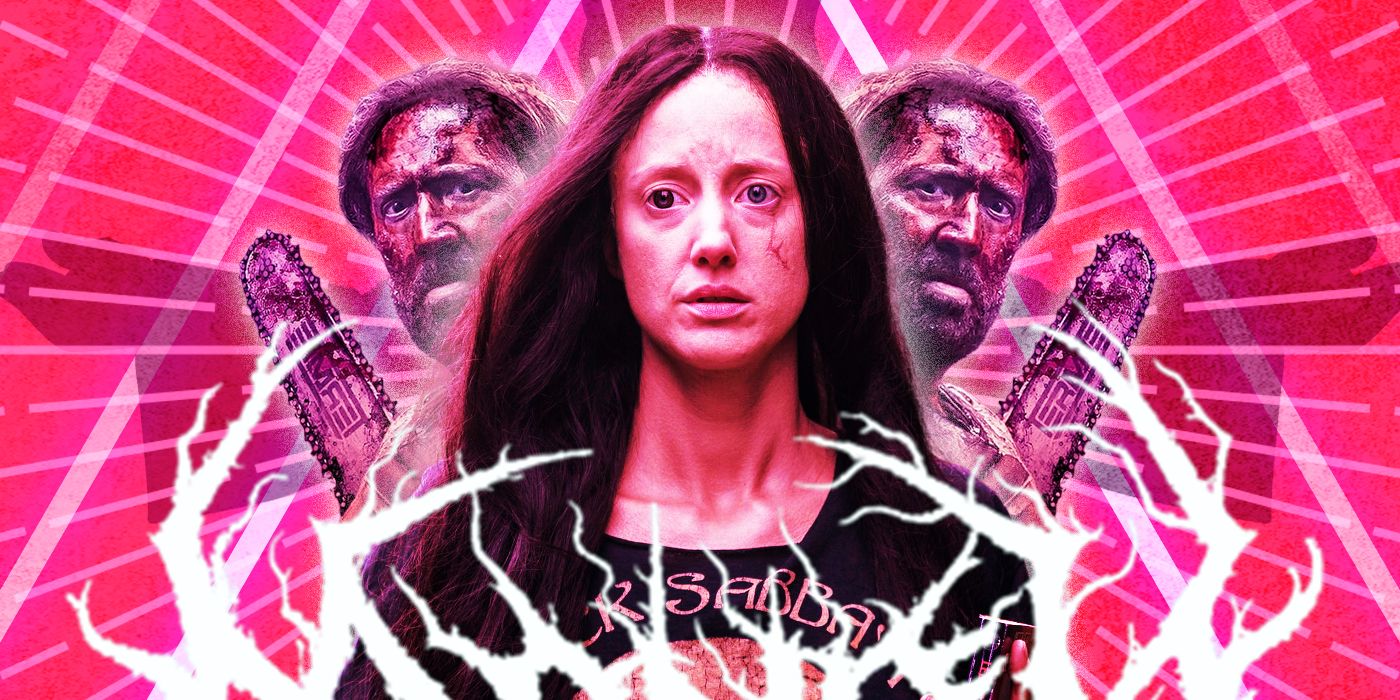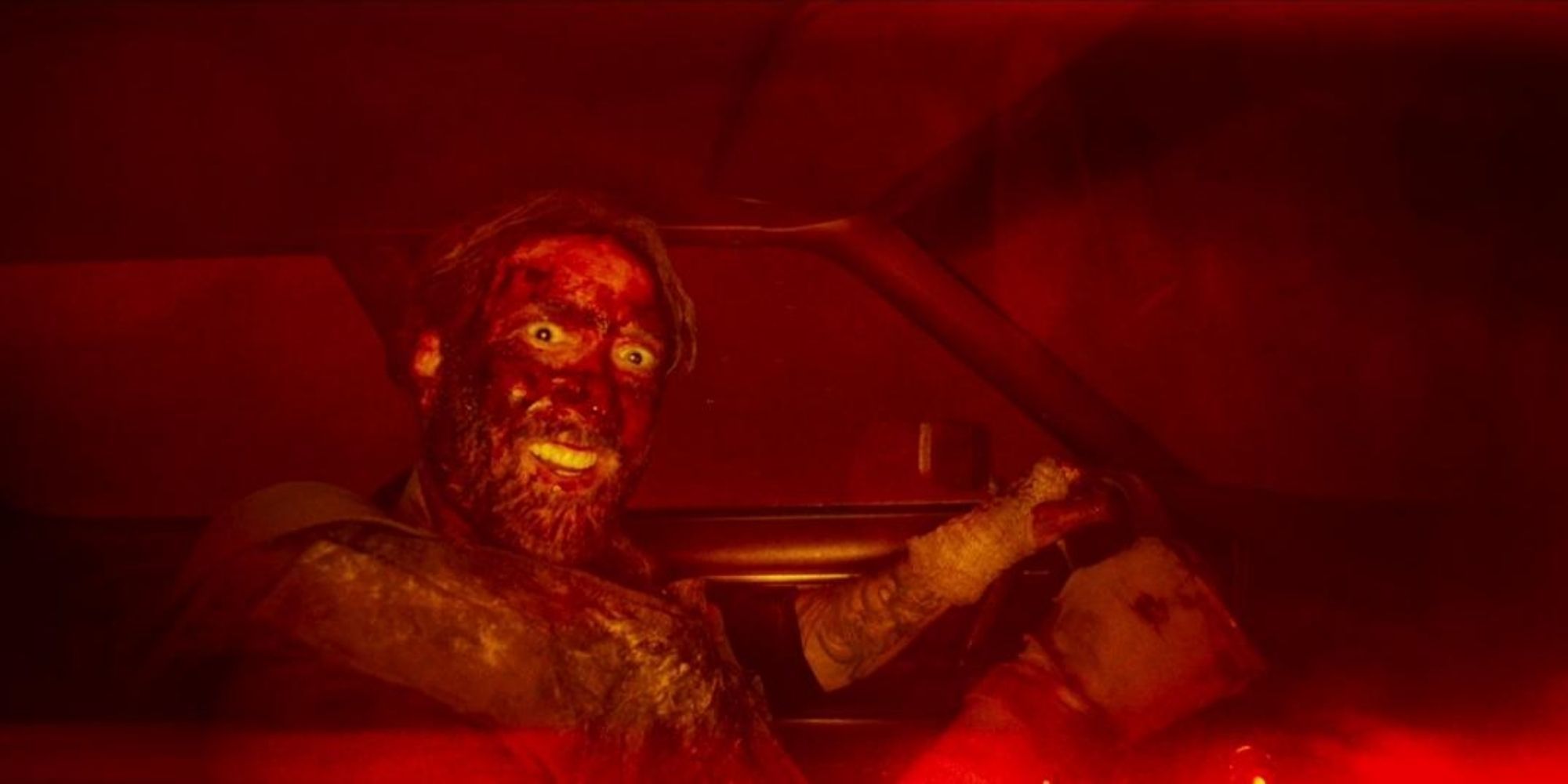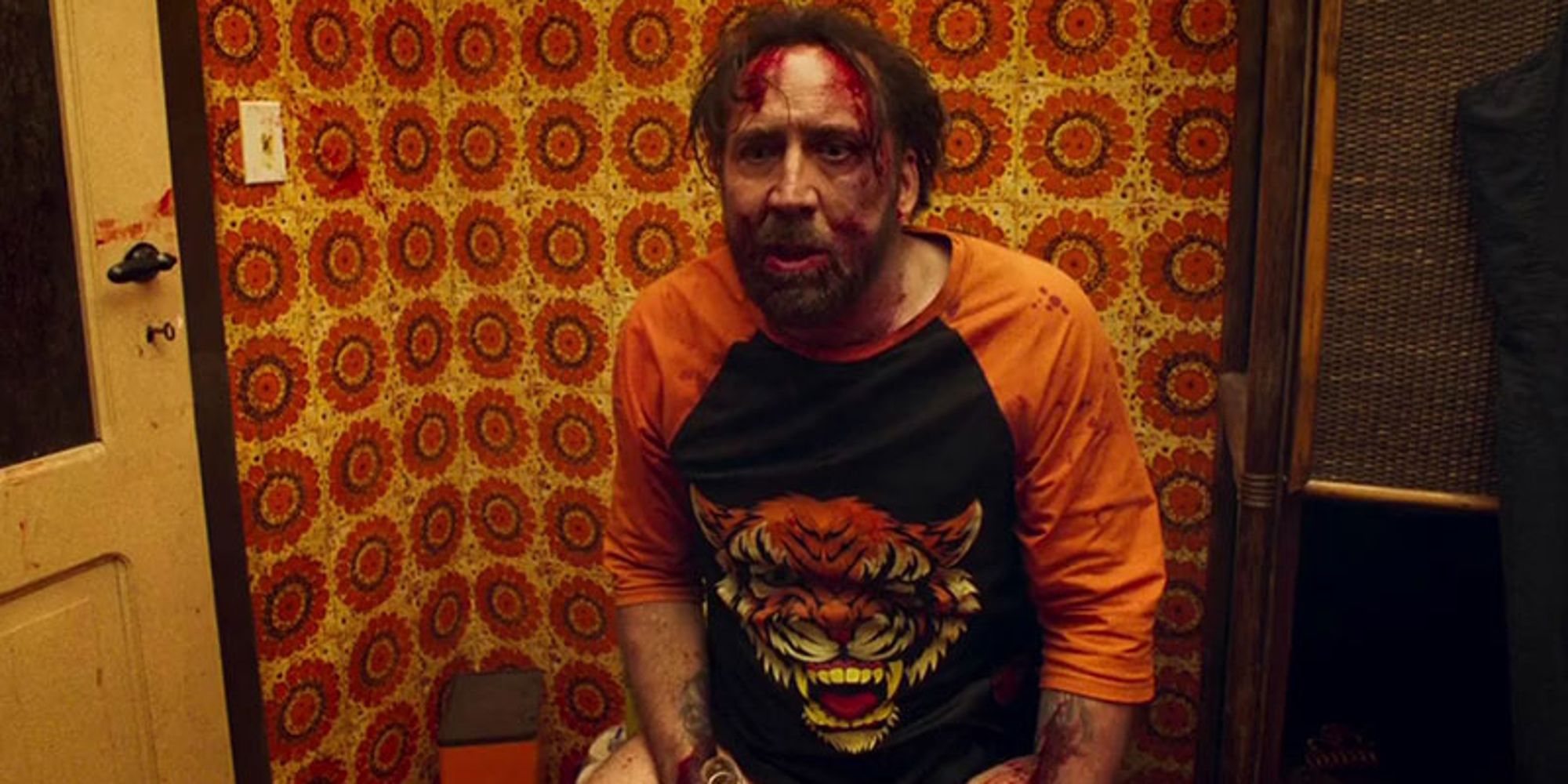Mandy (2018) is a difficult film to pin down: part revenge film, part visual art piece, it is a film that has continued to defy attempts to categorize it. Despite this, or perhaps because of it, it has built up a cult following since its release, and started what this author has lovingly termed the Cageissance, for lead actor Nicolas Cage, much like the McConaissance did for Matthew McConaughey post True Detective and Dallas Buyers Club. Mandy is a neon-drenched nightmare that takes on themes of revenge, misogyny and psychedelic reality shifts. Although this film is a contemporary one, and is set in the early 1980s, the turbulent legacy of the 1970s is evident in the dynamics between all the main characters and in the tense, uneasy questions the film poses about our right to live on our own terms, and the lack of protection from those who would do us harm.
What Is 'Mandy' About?
The film begins with an intimate look into the lives of Red (Nicolas Cage) and the titular Mandy (Andrea Riseborough), who have created an idyllic existence. Red lives in the woods but spends his days cutting down the things he loves as a logger, an apt metaphor for the way he will destroy the life he loved for revenge over the course of the film. Theirs is a romantic, poetic life among the trees, sleeping against a wall of glass that lets them glimpse the stars. This peace is shattered with the arrival of Jeremiah Sands (Linus Roache) and his Children of the New Dawn. Sands sets his sights on Mandy, and in the face of her rejection, sets in motion a chain of violence that will send Red over the edge of sanity.
The fears that haunted the American public during the 1970s are expertly exploited by director Panos Cosmatos to highlight how our collective fears in the modern age still echo with the screams of the past. The restlessness of the era and the rejection of traditional authority is represented in Red and Mandy's retreat into the secluded woods, choosing a life of easy solitude, unencumbered by capitalist drive. This legacy is also present in the widespread use of psychedelics, including a particular form of goblin gak that turns Cage into a blood soaked Golem, hellbent on destruction in the second half of the film. This is a tipping point for Mandy, taking it into unfamiliar territory, rife with tigers and, as Red so eloquently puts it "bikers, and gnarly psychos, and... crazy evil."
The 1970s Saw the Rise of the Serial Killer
Alongside the popularity of LSD and its resulting psychedelic imprint on art and creativity, during the 1970s we also bore witness to the rise of the serial killer. Serial offenders were not a new phenomenon, but it's worth noting that the overarching impact of such a high number of active serial killers in one decade led to a rapid culture shift from the carefree abandon of the 1960s, to the Stranger Danger of the 1980s. It is also clear to see the inspiration of the murderous cult leader, a central theme in Mandy, with Jeremiah Sands acting as a barely disguised stand-in for Charles Manson. Much like Manson, Sands is a megalomaniac, a whiny baby, a man so frustrated by the refusal of the world to see his greatness that he maims and harms others to externalize his rage. The rise of the civil rights movement, and women's liberation movements in the 1970s is echoed in Sands' rage at an indifferent world where he is no longer king and able to take what he wants with impunity. Much like Manson, he's a wannabe musician, so convinced by his greatness that any tiny knick to his ego is felt as a knife to the heart. The Children of the New Dawn, with their nomadic commune lifestyle, feel like a hangover from the free love era of the 1960s. That this lifestyle has been subverted into one that feeds the narcissism of Sands, and the greed that they satiate through home invasion, theft and violence only serves to echo the Manson family's cult of hero worship, murder, and drug abuse that was widely publicized during his trial in 1971.
'Mandy' Brings Back the Viewers to the Films of the 1970s
The violence of the second half of the film reminds the viewer of the gritty, often ambivalently brutal films of the 1970s, with shades of Taxi Driver and Travis Bickel (Robert DiNero) in Sands' ravings about the cleansing love of a Lord who loves him just a little bit more than most. Red's transformation into something more than human, a spiritual entity in the half light between god and man, reminds us of the ambiguous motives of the High Plains Drifter, starring Clint Eastwood. Red does not escape unscathed, and the deliberate vagueness of the ending, of a blood drenched man haunted by his lover reminds us that revenge comes at a price, for all involved. There are a number of folk elements, from Sands' failed career as a folk musician, to the vivid imagery peppered throughout, that give subtle nods to the desire to subvert religious belief for nefarious purposes. The temple, in which the final showdown between Red and Sands takes place, set in a quarry and eventually burning to the ground, provides a contemporary take on symbolism that still retains shades of classic folk horror like The Wicker Man.
Difficult to classify it may be, but Mandy has left an indelible cultural imprint on the horror genre, earning Nicolas Cage heaped praise and reinvigorating the aesthetic of horror movies with shades of pink and purple that have continued to tint our blood drenched screens in films like Color Out of Space and Bliss. Despite the abundance of blood and guts, a chainsaw fight sure to go down in history and a delightfully over the top performance from Cage, Mandy never loses its heart. From the eerily beautiful score from Johan Johansson to the ultra romantic love story between Red and Mandy, we never lose our identification with Red and his desire to avenge Mandy's death. The grit of the 1970s may be all over it, but it is also a timeless story of love, loss and grief.



